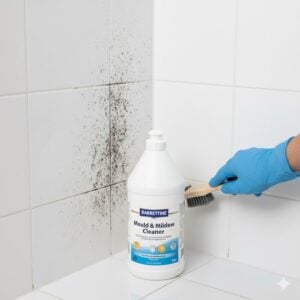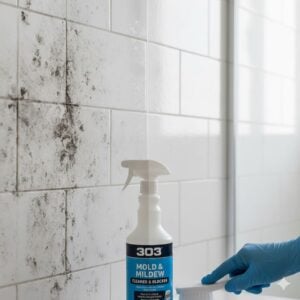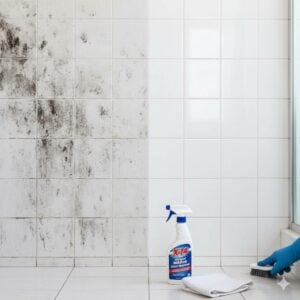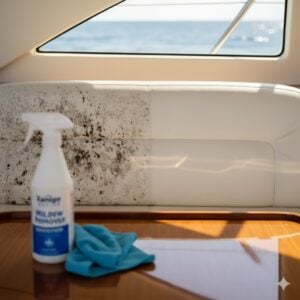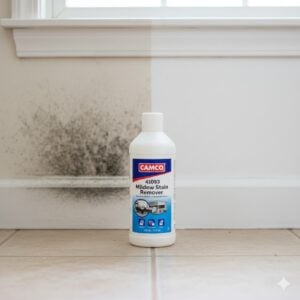Ever lifted your mattress and spotted strange black or green patches underneath? You’re not alone. Mold on a mattress is a surprisingly common problem in humid places like Dubai, Sharjah, or Abu Dhabi—especially if your bedroom has poor ventilation or you sleep directly on a platform bed or the floor.
While mold might seem like just a cosmetic issue, it can actually trigger allergies, ruin your sleep quality, and even affect your long-term health. Worse, mold can grow silently inside your mattress without any obvious smell or surface stains—until it spreads.
In this article, we’ll help you understand what causes mold on mattresses, how to spot it early, remove it safely, and keep it from coming back. If the mold is beyond control, you can always click the contact button on the right-middle of this post for expert mold treatment by Bio-On UAE.
Table of Contents
Toggle1. What Causes Mold on a Mattress?
Mold needs moisture, darkness, and warmth to grow—three things that often come together right inside your bed. Even if you keep your room clean, daily habits and bedroom setup can lead to trapped humidity inside the mattress.
Common reasons mold appears on mattresses in the UAE:
- Sweat and body heat: During sleep, your body naturally releases moisture, especially during hot UAE nights. Over time, this builds up in the mattress layers.
- Lack of airflow underneath: Placing your mattress on the floor or solid wooden base blocks ventilation, allowing heat and dampness to stay trapped.
- High humidity: Bedrooms without proper airflow or AC can retain moisture in the air, especially near windows or walls.
- Heavy bedding or plastic covers: These can trap condensation and stop the mattress from breathing properly.
If you combine these factors with rare mattress flipping or long-term use, mold can easily settle in—and grow without you noticing.
2. How to Spot Mold on Your Mattress
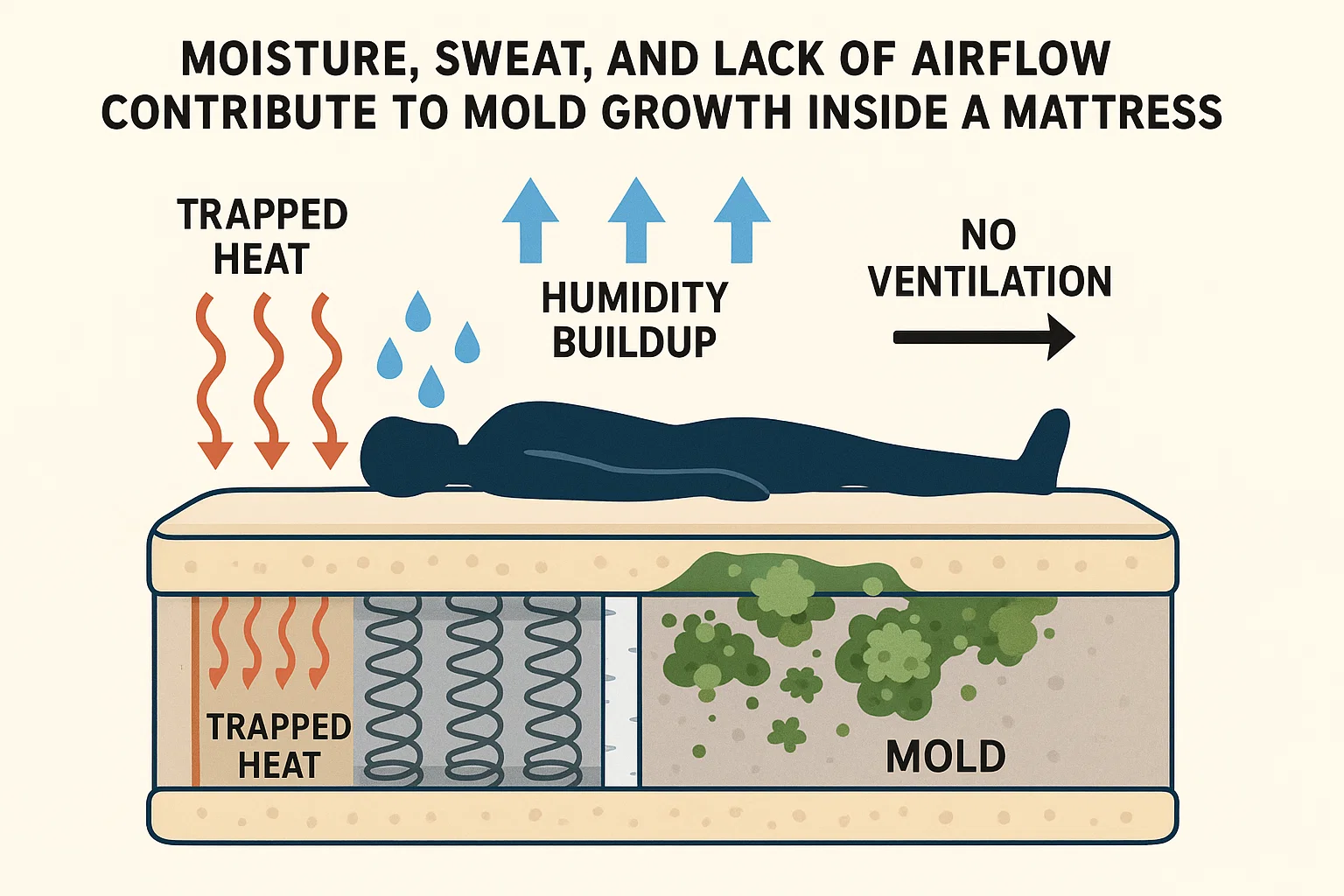
Mold isn’t always obvious at first. Some signs are visible, but others can affect your health or the smell of your bedroom before you even notice stains.
Look for these warning signs:
- Black, green, or gray spots on the mattress surface or edges
- A damp, musty smell when you enter the room or lift the covers
- Worsening allergies, sneezing, or itchy eyes after sleep
- Discoloration along seams or under the mattress
To check properly, lift the mattress and inspect underneath—especially near the head or foot area. Use a flashlight if needed, and press gently to feel if the material seems damp. If mold is deep inside the foam or smells strong, surface cleaning won’t be enough—you’ll need to consider a deeper fix or full replacement.
3. How to Remove Mold from a Mattress Safely
If you’ve found mold on your mattress, don’t panic—but don’t delay either. Mold spreads quickly and can release spores into the air. Follow these safe steps to clean small patches. But remember, if the mold has penetrated deep into the mattress, replacement may be the only health-safe option.
Step-by-step cleaning process:
- Protect yourself: Wear gloves, a mask, and ideally open windows for ventilation. If you have allergies or asthma, ask someone else to help.
- Vacuum the surface: Use a vacuum with a HEPA filter to remove loose mold spores. Dispose of the vacuum bag immediately afterward.
- Spot-treat with vinegar or alcohol: Lightly spray the affected area with white vinegar or rubbing alcohol (at least 70%). Do not oversaturate—use just enough to dampen.
- Let it sit and dry: Wait 30 minutes to an hour, then blot the area with a clean, dry towel. Avoid scrubbing too hard to prevent mold spreading deeper.
- Sun-dry or air-dry: If possible, place the mattress in direct sunlight for several hours. Sunlight naturally kills mold and helps dry moisture trapped inside. If outdoor sun is not an option, use a fan or blow dryer.
Important: If the mold is widespread, smells strong, or keeps returning, do not keep using the same mattress. Mold spores can affect your lungs and skin. It’s safer—and often cheaper in the long run—to replace the mattress and clean the room with professional help.
4. How to Prevent Mold on Your Mattress
Once you’ve cleaned or replaced a moldy mattress, prevention is key. Dubai’s humid climate can encourage mold year-round, so staying proactive can protect your health—and your sleep.
Tips to keep your mattress mold-free:
- Use breathable mattress protectors: Skip plastic covers. Use a washable cotton or bamboo protector that allows airflow.
- Elevate the mattress: Avoid placing it directly on the floor. Use a slatted base or bed frame that allows ventilation underneath.
- Let it air weekly: Every few days, lift the mattress or pull back the covers to let fresh air circulate inside.
- Control room humidity: Use a dehumidifier or run your AC on dry mode. Keep indoor humidity below 60% if possible.
- Don’t place wet laundry nearby: Avoid drying clothes in the bedroom, especially on or near the bed.
- Rotate your mattress regularly: Flip or rotate it every 3–6 months to reduce uneven moisture buildup.
By turning these steps into a habit, you can greatly reduce the chance of mold ever returning. It’s all about airflow, dryness, and regular checks.
5. When to Call Mold Professionals in the UAE
If mold returns after cleaning, spreads deeper into the foam, or shows up in other areas like walls or curtains—this isn’t just a mattress problem anymore. It likely means your room has a humidity or ventilation issue that needs to be handled properly.
At Bio-On UAE, we specialize in identifying and treating mold from the root. Our team can:
- Inspect your home for hidden leaks, moisture buildup, or AC problems
- Use safe, municipality-approved mold treatments for furniture and rooms
- Advise you on long-term solutions for ventilation and humidity control
- Help you prevent mold from returning—for good
If you feel overwhelmed or aren’t sure how bad the mold situation is, just click the contact button on the right-middle of this post. We’re available 24/7 and cover all Emirates including Dubai, Sharjah, Abu Dhabi, and beyond.
Conclusion
Mattress mold can sneak up on even the cleanest homes—especially in a humid climate like the UAE. It’s not just about bad smell or stains. Mold affects how well you sleep, how safe your air is, and your overall health. That’s why knowing how to spot it early, clean it safely, and prevent it long-term is so important.
We hope this guide gives you the clarity to act fast and confidently. And if mold keeps coming back despite your efforts, remember: Bio-On is just one click away. Contact us through the button on the right-middle of this post and get expert help for a mold-free, healthy home.








